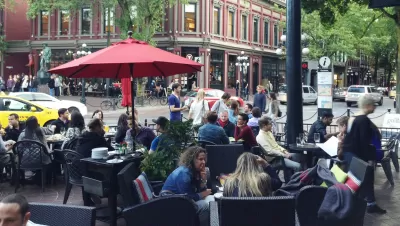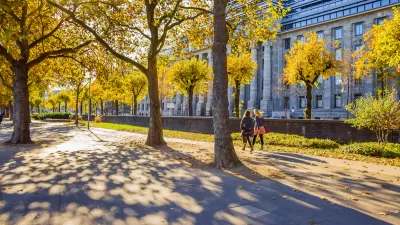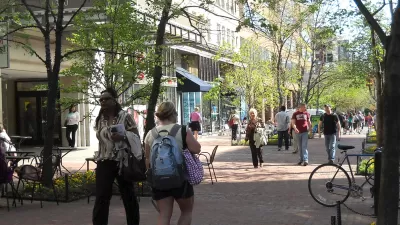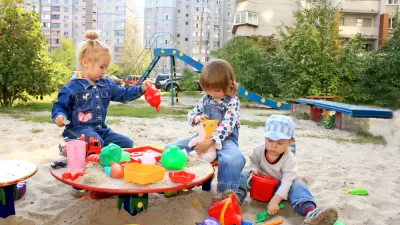As the pandemic emphasized, the way we design our cities can have lasting impacts on residents' health and wellness.

In Governing, Alan Ehrenhalt highlights the link between urban design and public health, pointing to arguments by public health experts that the way we design cities and buildings has a powerful impact on the health of individuals and populations.
A fair amount of public health by design has to do with re-engineering temperature, especially making the environment cooler in abnormally hot times and places. Reducing the amount of blacktop pavement is one way to do this; too much blacktop creates a heat trap. Protecting tree cover is one more; ample tree cover has been shown to reduce the prevalence of asthma in large cities.
As another example, walkability affects people's ability to get regular exercise by walking to work, school, or local amenities. Meanwhile, polluted air can counteract the positive effects of good sidewalks and crosswalks by contributing to the prevalence of lung and respiratory diseases.
Ehrenhalt provides other examples of design choices that impact public health, including stairways, ventilation, and open-air plazas. But while he supports the concept, Ehrenhalt cautions that "Adding health impact studies, in addition to forcing predictions that are difficult to make in the long run, would add significantly to the red-tape problem." Nevertheless, the public health lessons of the past century can inform design decisions that create healthier cities.
FULL STORY: Is the Design of Our Cities Making Us Sick?

Alabama: Trump Terminates Settlements for Black Communities Harmed By Raw Sewage
Trump deemed the landmark civil rights agreement “illegal DEI and environmental justice policy.”

Study: Maui’s Plan to Convert Vacation Rentals to Long-Term Housing Could Cause Nearly $1 Billion Economic Loss
The plan would reduce visitor accommodation by 25% resulting in 1,900 jobs lost.

Planetizen Federal Action Tracker
A weekly monitor of how Trump’s orders and actions are impacting planners and planning in America.

Waymo Gets Permission to Map SF’s Market Street
If allowed to operate on the traffic-restricted street, Waymo’s autonomous taxis would have a leg up over ride-hailing competitors — and counter the city’s efforts to grow bike and pedestrian on the thoroughfare.

Parklet Symposium Highlights the Success of Shared Spaces
Parklets got a boost during the Covid-19 pandemic, when the concept was translated to outdoor dining programs that offered restaurants a lifeline during the shutdown.

Federal Homelessness Agency Places Entire Staff on Leave
The U.S. Interagency Council on Homelessness is the only federal agency dedicated to preventing and ending homelessness.
Urban Design for Planners 1: Software Tools
This six-course series explores essential urban design concepts using open source software and equips planners with the tools they need to participate fully in the urban design process.
Planning for Universal Design
Learn the tools for implementing Universal Design in planning regulations.
Caltrans
Smith Gee Studio
Institute for Housing and Urban Development Studies (IHS)
City of Grandview
Harvard GSD Executive Education
Toledo-Lucas County Plan Commissions
Salt Lake City
NYU Wagner Graduate School of Public Service





























